An indicative list of National and European Research projects follows:
CURRENT PROJECTS
EDF 2022 PROTEAS – DePloyable Special OpeRations Forces MulTi Environment CommAnd Post and C2 System

 PROTEAS project will provide a prototyped deployable special operations forces multi environment command post and C2 System (SOFCPC2) consisting of the shelter, the power system, communications infrastructure, Command and Control, portable devices for field-deployed task groups, manned and unmanned assets and perimeter security system.
PROTEAS project will provide a prototyped deployable special operations forces multi environment command post and C2 System (SOFCPC2) consisting of the shelter, the power system, communications infrastructure, Command and Control, portable devices for field-deployed task groups, manned and unmanned assets and perimeter security system.The PROTEAS consortium consists of 14 partners and one affiliated entity from 6 EU Member States and Norway. This project has received funding from the European Defence Fund 2022 Programme (EDF 2022-DA) under Grant Agreement No. 101121371-PROTEAS-EDF-2022-DA, and the MoDs of Greece, Italy, France, Norway and Belgium.
EDIDP 2019 LOTUS – Low Observable Tactical Unmanned Air System
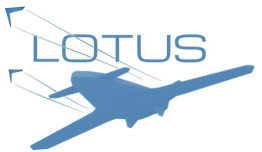
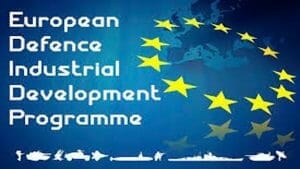 The LOTUS project addresses the feasibility, detailed design, prototyping and testing of a low-observable, airworthy and interoperable Tactical Remotely Piloted Aircraft System (TRPAS) targeted at ISR missions. This project aims at addressing an important need of EU Member States which is the capability of TRPAS to operate in contested environments, which is clearly expressed in the Common Operational Requirements agreed upon by the Hellenic, Cypriot and Dutch MoDs who support the project.
The LOTUS project addresses the feasibility, detailed design, prototyping and testing of a low-observable, airworthy and interoperable Tactical Remotely Piloted Aircraft System (TRPAS) targeted at ISR missions. This project aims at addressing an important need of EU Member States which is the capability of TRPAS to operate in contested environments, which is clearly expressed in the Common Operational Requirements agreed upon by the Hellenic, Cypriot and Dutch MoDs who support the project.The development will include: a mothership TRPAS equipped with ISR sensors, designed for low observability and high endurance, incorporating a self-protection system against enemy threats; a system of tube-launched, foldable-wing drones, deployable from the mothership, while this later remains at a safe distance; on-board sensor data processing capabilities for target detection, recognition, identification and classification; and a ground station which will be designed by the “security-by-design” principles.
The LOTUS has received funding from the European Union’s European Defence Industrial Development Programme under Grant Agreement No. EDIDP-ISR-TRPAS-2019-030 and the MoDs of Greece and Cyprus. The LOTUS consortium is led by IDE (coordinator) and consists of 11 partners from Greece (IDE, Aristotle University of Thessaloniki, ALTUS, CFT, University of Patras and Hellenic Air Force Telecommunications-Electronic Means Plant), Cyprus (SignalGenerix, Cyric, Geoimaging), Spain (Embention) and Holland (RHEA).
EDIDP 2019 SMOTANET – Development of Software Defined Mobile Ad-hoc Tactical Network Devices and Testbed
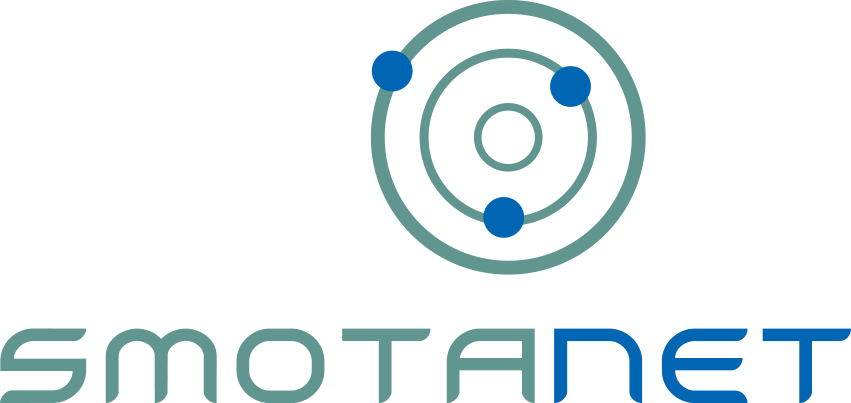

The objectives of the SMOTANET project are to design a modular, adaptive and secure tactical network. To achieve this, the SMOTANET project will: (i) Design tactical devices that integrate three different technologies, namely, Software Defined Radio (SDR), Mobile Ad-hoc Networks (MANET) and Software Defined Networks (SDN) and (ii) Develop testbeds based on the aforementioned devices that will be used to test and evaluate operational scenarios and the corresponding technical solutions according to well defined metrics.
The Studies will deliver operational scenarios and technical requirements in cooperation with the Greek and Cypriot MoDs. The Design Activities will deliver the design specifications of the controller and the switch as well as a testbed that can evaluate the performance of relative networks under realistic conditions. Specifically, the testbeds will realize representative tactical scenarios, they will implement controller-to-controller, controller-to-switch and switch-to-switch links and will ultimately unite them in a holistic network-wide network control architecture managed by SDN controllers.
The SMOTANET project has received funding from the European Defence Industrial Development Programme (EDIDP) under Grant Agreement No. EDIDP-CSAMN-SDN-2019-038-SMOTANET. The SMOTANET consortium, which is led by IDE (coordinator), consists of 5 partners from Greece (IDE, Gridnet, Athens University of Economics and Business), Cyprus (SignalGenerix) and Poland (ITTi).
ESA ACROSS AIR – Advanced Broadband Satcom Solutions for Rotary Wing Aircraft
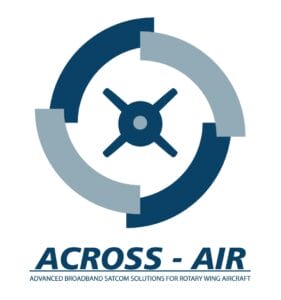
 ACROSS-AIR project (an ESA – ARTES FPE project) explores the needs, requirements, opportunities and potential solutions for establishing effective broadband satellite communication services to rotary winged aircrafts, including helicopters, commercial UAVs and UAMs platforms. The consortium analyses the State-of-the-Art, identifies Use Cases and requirements, and performs system level modeling, simulation and analysis. Finally, technical and non-technical gaps are identified and a related roadmap is created.
ACROSS-AIR project (an ESA – ARTES FPE project) explores the needs, requirements, opportunities and potential solutions for establishing effective broadband satellite communication services to rotary winged aircrafts, including helicopters, commercial UAVs and UAMs platforms. The consortium analyses the State-of-the-Art, identifies Use Cases and requirements, and performs system level modeling, simulation and analysis. Finally, technical and non-technical gaps are identified and a related roadmap is created.
IDE is the Prime Contractor of the project, focusing on the terrestrial segment of the analysis, and more specifically, on the required telecom systems for rotary winged aircrafts.
The ACROSS-AIR Consortium consists of 3 partners from Greece (IDE & OHB HELLAS) and Spain (Alpha Unmanned Systems S.L.).
EDF 2022 ODIN’S EYE II – Multinational Development Initiative for a Space-based Missile Early-warning Architecture II
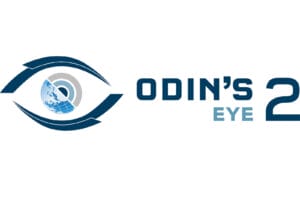
 ODIN’S EYE II contributes to the further development of a European space-based missile early warning (SBMEW) architecture initiated under EDIDP. The target system addresses timely warning, technical intelligence and missile defence systems against ballistic, hypersonic and anti-satellite (ASAT) threats, as well as proliferation control.
ODIN’S EYE II contributes to the further development of a European space-based missile early warning (SBMEW) architecture initiated under EDIDP. The target system addresses timely warning, technical intelligence and missile defence systems against ballistic, hypersonic and anti-satellite (ASAT) threats, as well as proliferation control.
Within the ODIN’S EYE II project, IDE will focus on the definition and specification of a Cyber Security Concept for Ground Communications and Networks.
The ODIN’S EYE II Consortium led by OHB SYSTEM AG consists of 38 partners from 12 EU Member States and Norway. This project has received funding from the European Defence Fund 2022 Programme (EDF 2022-DA) under Grant Agreement No. 101121453-ODINS EYE II-EDF-2022-DA.
EDF 2022 FASETT – Future Air System for European Tactical Transportation
 Tactical transportation aircrafts are part of a military logistic system. It covers multi-domain operations workhorses, able to take-off and land from/on short unprepared runways, able to transport soldiers, passengers, vehicle and equipment on a low altitude tactical flight to deliver on operational needs. The FASETT feasibility study aims to carry out a cooperative analysis of the transport aircraft replacement needs of EU Member States on the 2030-2040 horizon and to identify European development opportunities to address strategic gaps.
Tactical transportation aircrafts are part of a military logistic system. It covers multi-domain operations workhorses, able to take-off and land from/on short unprepared runways, able to transport soldiers, passengers, vehicle and equipment on a low altitude tactical flight to deliver on operational needs. The FASETT feasibility study aims to carry out a cooperative analysis of the transport aircraft replacement needs of EU Member States on the 2030-2040 horizon and to identify European development opportunities to address strategic gaps.
IDE will contribute to study activities concerning cybersecurity requirements, and the technology gaps of the vehicle architecture with emphasis on communication systems and on the Mission System.
The FASETT Consortium, led by AIRBUS DEFENCE AND SPACE SAS consists of 31 partners from 12 EU Member States. This project has received funding from the European Defence Fund 2022 Programme (EDF 2022-RA) under Grant Agreement No. 101121450-FASETT-EDF-2022-RA.
EDF 2022 CASSATA – Covert and Advanced multi-modal Sensor Systems for tArget acquisition and reconnAissance

 With the emergence of new challenges and rapidly developing threats by enemy forces in land, maritime, air and space domains, novel multi-sensor platforms are required to maintain and ensure superiority of EU forces. The project CASSATA will improve and implement cutting-edge technologies to provide more accurate and effective covert sensing solutions. The project will address different domains of covert sensing including both the sensors themselves as well as the software and digital solutions that enable the operation in multi-sensing platform systems.
With the emergence of new challenges and rapidly developing threats by enemy forces in land, maritime, air and space domains, novel multi-sensor platforms are required to maintain and ensure superiority of EU forces. The project CASSATA will improve and implement cutting-edge technologies to provide more accurate and effective covert sensing solutions. The project will address different domains of covert sensing including both the sensors themselves as well as the software and digital solutions that enable the operation in multi-sensing platform systems.
IDE will contribute to study and design activities concerning Tactical Communications for interfacing of the converted sensors and Mesh Networking for urban locations.
The CASSATA Consortium led by ICCS, consists of 27 partners from 9 EU Member States. This project has received funding from the European Defence Fund 2022 Programme (EDF 2022-RA) under Grant Agreement No. 101121447-CASSATA-RA.
EDF 2022 TICHE – Threats Identification by Collaborative vehicles for Human life saving against Explosives
 TICHE will participate in the technological challenge by developing a novel multi-platform collaborative solution to detect and characterize hidden Improvised Explosive Devices (IED) and landmines in complex environments, using a combination of advanced sensors, information fusion from those sensors, and unmanned ground and aerial systems to extend the detection capabilities. The developed solution will improve the state-of-the-art in support of military operations and lifesaving.
TICHE will participate in the technological challenge by developing a novel multi-platform collaborative solution to detect and characterize hidden Improvised Explosive Devices (IED) and landmines in complex environments, using a combination of advanced sensors, information fusion from those sensors, and unmanned ground and aerial systems to extend the detection capabilities. The developed solution will improve the state-of-the-art in support of military operations and lifesaving.
IDE will contribute with AI algorithms for obstacle detection/avoidance and target detection and to the TICHE Communications.
The TICHE Consortium, led by RINA CONSULTING – CENTRO SVILUPPO MATERIALI SPA, consists of 12 partners from 5 EU Member States. This project has received funding from the European Defence Fund 2022 Programme (EDF 2022-LS-RA CHALLENGE) under Grant Agreement No. 101121485-TICHE-EDF-2022-LS-RA-CHALLENGE.
EDF 2021 NOMAD – NOvel energy storage technologies usable at MilitAry Deployments in forward operating bases

 IDE participates in the EDF project “NOvel energy storage technologies usable at MilitAry Deployments in forward operating bases” (NOMAD). NOMAD will build a collaborative framework among European industries, R&D organisations and relevant stakeholders in order to promote and support the development and operational validation of European energy storage and associated technologies, from feasibility studies to validation in relevant environments.
IDE participates in the EDF project “NOvel energy storage technologies usable at MilitAry Deployments in forward operating bases” (NOMAD). NOMAD will build a collaborative framework among European industries, R&D organisations and relevant stakeholders in order to promote and support the development and operational validation of European energy storage and associated technologies, from feasibility studies to validation in relevant environments.
The NOMAD consortium, led by EQUIPOS MÓVILES DE CAMPAÑA ARPA S.A.U., consists of 19 partners from 10 EU Member States.
IDE studies and designs critical modules of the NOMAD system; leads the work package “Technology Demonstration”, while IDE is responsible for one NOMAD Technology Demonstrator.
EDF 2021 INDY – Energy Independent and Efficient Deployable Military Camps

 IDE participates in the EDF project “Energy Independent and Efficient Deployable Military Camps” (INDY). INDY aims at developing a strategic roadmap towards the future energy independent and efficient deployable military camps, based on a paradigm shift for energy production, conversion, storage, transport, distribution and final usage. The project is building on military and civilian EU and national projects.
IDE participates in the EDF project “Energy Independent and Efficient Deployable Military Camps” (INDY). INDY aims at developing a strategic roadmap towards the future energy independent and efficient deployable military camps, based on a paradigm shift for energy production, conversion, storage, transport, distribution and final usage. The project is building on military and civilian EU and national projects.
The INDY consortium, led by TECES Green Tech Cluster, consists of 20 partners from 11 EU Member States and associated Countries.
IDE contributes to the study activities for “INDY” Energy Storage, Microgrid and Intelligent Power Distribution concepts, based on its fielded experience in Hybrid Power Systems.
EDF 2021 COMMANDS – Convoy Operations with Manned-unManneD Systems


IDE participates in the EDF project “Convoy Operations with Manned-unManneD Systems” (COMMANDS). COMMANDS aims at developing Through Life Capabilities (TLC) for agile, intelligent and cooperative manned and unmanned land systems. The results will not only enable to upgrade current ground vehicles of the EU inventory for specific missions, but also to be integrated in future vehicles in development.
The COMMANDS consortium, led by SENER AEROSPACE, consists of 21 partners from 10 EU Member States.
IDE develops the COMMANDS MANET communication network.
EDF 2021 EPC – European Patrol Corvette
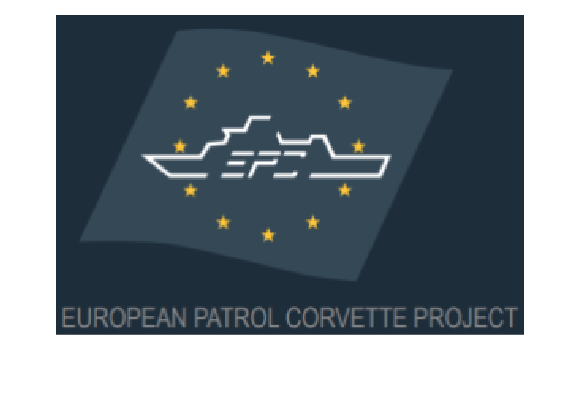
 IDE participates in the EDF project “European Patrol Corvette” (EPC) (selected for funding). EPC will focus on the initial phase of a European innovative, modular, flexible, interoperable, green, multirole vessel, enabling the European navies to face the 21st century challenges.
IDE participates in the EDF project “European Patrol Corvette” (EPC) (selected for funding). EPC will focus on the initial phase of a European innovative, modular, flexible, interoperable, green, multirole vessel, enabling the European navies to face the 21st century challenges.The project EPC will focus on conceptual studies up to the initial design, and use as a reference corvette class vessel which can fulfil a wide range of missions in future contexts of operations. The produced design will be modular and flexible, more energy-efficient, greener, safer, more interoperable and cyber-secured.
The EPC consortium, led by NAVIRIS, consists of 40 entities from 12 EU Member States.
IDE contributes to study activities on the EPC MANET radiosystem and interoperability aspects of Unmanned Sea Vehicles’ communications.
EDF 2021 5G COMPAD – 5G Communications for Peacekeeping And Defense
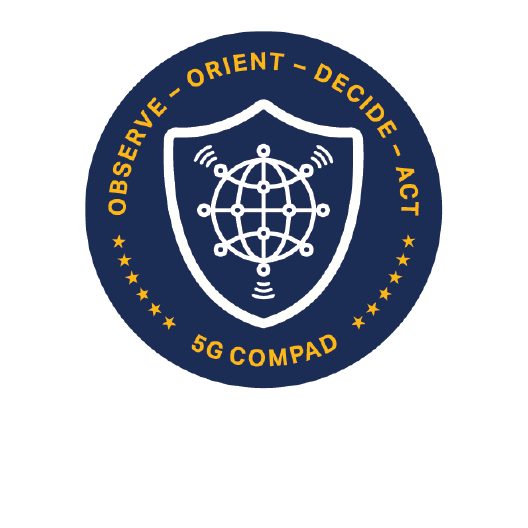
 IDE participates in the EDF project “5G Communications for Peacekeeping And Defense” (5G COMPAD). 5G COMPAD will design, prototype and test a reference architecture for a 5G based robust and resilient multidimensional communications system to demonstrate operational capabilities of 5G integrated in selected defence platforms and systems. It will develop new and improved functionalities and improve the lifecycle cost. As a result the project will enable enhanced operational capabilities.
IDE participates in the EDF project “5G Communications for Peacekeeping And Defense” (5G COMPAD). 5G COMPAD will design, prototype and test a reference architecture for a 5G based robust and resilient multidimensional communications system to demonstrate operational capabilities of 5G integrated in selected defence platforms and systems. It will develop new and improved functionalities and improve the lifecycle cost. As a result the project will enable enhanced operational capabilities.The 5G COMPAD consortium, led by Saab, consists of 19 partners from 12 EU Member States.
IDE mainly contributes to study, design, prototyping and testing activities on 5G COMPAD Secure Framework Requirements and on 5G COMPAD Military Dependability Requirements.
EDF 2021 dTHOR – Digital Ship Structural Health Monitoring
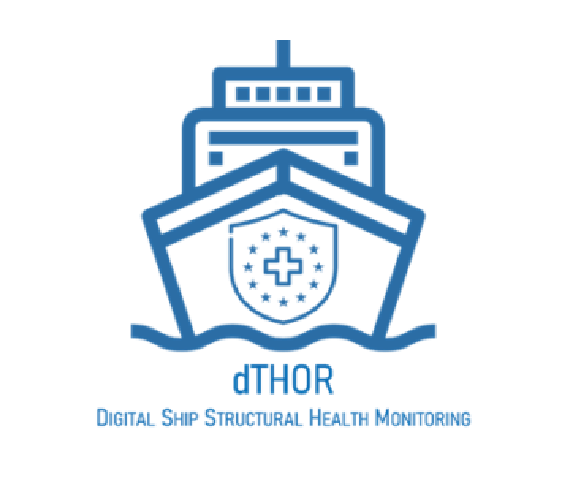
 IDE participates in the EDF project “Digital Ship Structural Health Monitoring” (dTHOR). dTHOR will develop a system based on innovative utilization of large amounts of load and response measurements from robust and advanced sensors, a digital framework complying with recognised open standards for data exchange, and hybrid analysis and modelling, which combines physics-based and data-driven models. dTHOR will consolidate end-users’ military operational requirements based on improved battle damage and structural integrity assessment, reduced hydro-acoustic signatures, and more accurate operation of weapon systems.
IDE participates in the EDF project “Digital Ship Structural Health Monitoring” (dTHOR). dTHOR will develop a system based on innovative utilization of large amounts of load and response measurements from robust and advanced sensors, a digital framework complying with recognised open standards for data exchange, and hybrid analysis and modelling, which combines physics-based and data-driven models. dTHOR will consolidate end-users’ military operational requirements based on improved battle damage and structural integrity assessment, reduced hydro-acoustic signatures, and more accurate operation of weapon systems.The dTHOR consortium, led by SINTEF AS, consists of 35 partners from 11 EU Member States.
IDE contributes to study and design activities for a reliable and secure Physical Data link of the dTHOR system.
EDIDP 2020 ODIN’S EYE – Multinational Development Initiative for a Space-based Missile Early-warning Architecture
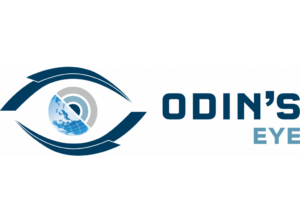
 IDE participates in the ODIN’S EYE project, led by OHB System AG, a subsidiary of space and technology group OHB SE.
IDE participates in the ODIN’S EYE project, led by OHB System AG, a subsidiary of space and technology group OHB SE.EDIDP 2020 e-COLORSS – European Common Long Range Indirect Fire Support System
The project “e-COLORSS” proposes a significant step forward for European long-range artillery through an 155 mm cannon and a European rocket launcher. The vehicle will be based on a hybrid truck mounted platform, ensuring very fast ammunition and charges resupply, and an interoperable, robust and secured communication system.
The e-COLORSS consortium consists of 16 partners from 10 EU Member States.
IDE contributes to hybrid power solutions studies for the e-COLORSS.
This project has received funding from the European Defence Industrial Development Programme (EDIDP) under Grant Agreement No. EDIDP-NGPSC-LRIF-2020-110-ECOLORSS.
Horizon 2020 – HERMES
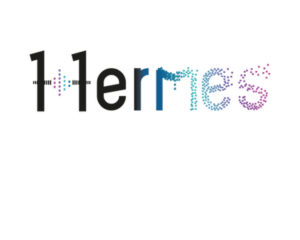
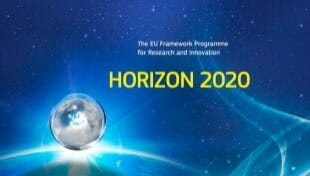 IDE participates in the HORIZON2020 project HERMES (High Efficiency wiReless CMOS transceiver boosted by artificial intelligencE for 6G bandS and beyond). The project focus on sub-THz frequencies and breaks new ground in the conversion of information from digital to THz, using European CMOS technology, to develop a highly integrated transceiver. The project will produce a chipset of a low-cost radio that exchanges tens of Gbps and will test it in use cases of unmanned vehicles operated by civil authorities.
IDE participates in the HORIZON2020 project HERMES (High Efficiency wiReless CMOS transceiver boosted by artificial intelligencE for 6G bandS and beyond). The project focus on sub-THz frequencies and breaks new ground in the conversion of information from digital to THz, using European CMOS technology, to develop a highly integrated transceiver. The project will produce a chipset of a low-cost radio that exchanges tens of Gbps and will test it in use cases of unmanned vehicles operated by civil authorities.
IDE, in the context of the project, will test the HERMES chipset in the area of communications for unmanned sea vehicles. The HERMES project is being implemented by a consortium of 6 patterns from 5 European countries, led by the Université de Bordeaux.
The HERMES project has received funding from the European Union’s Horizon 2020 research and innovation programme under Grant Agreement No. 964246.
EDA CAT B – ACHILLES
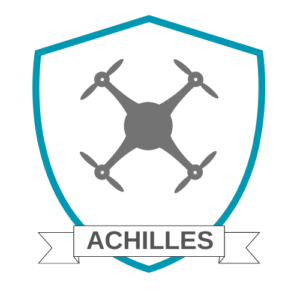
 IDE participates in the EDA CAT B project “AUTONOMOUS, RECONFIGURABLE SWARMS OF UNMANNED VEHICLES FOR DEFENSE APPLICATIONS [ACHILLES]”. Autonomous swarms of unmanned systems could allow in the future performing complex functions more efficiently and effectively. The objectives of the ACHILLES project are:
IDE participates in the EDA CAT B project “AUTONOMOUS, RECONFIGURABLE SWARMS OF UNMANNED VEHICLES FOR DEFENSE APPLICATIONS [ACHILLES]”. Autonomous swarms of unmanned systems could allow in the future performing complex functions more efficiently and effectively. The objectives of the ACHILLES project are:
a) to pursue a step forward toward the introduction of unmanned swarms for defence applications by increasing the TRL of autonomous, reconfigurable swarms of unmanned vehicle for specific defence missions (i.e. persistent monitoring of theatre of operations) and
b) to develop and demonstrate the feasibility of autonomous, reconfigurable swarms of UXVs for persistent monitoring in defence scenarios up to a TRL of 5.
IDE is involved in the conceptual Design of the radio communication systems for the operation of swarms of UAVs.
Agile 4.0

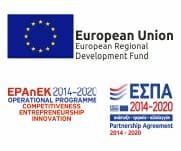 IDE participates in The Agile 4.0 Cluster. Agile 4.0 is an enhanced Digital Innovation Hub for Agile Manufacturing of the Future, which brings together 14 leading partners in the field of Industry from all over Greece.
IDE participates in The Agile 4.0 Cluster. Agile 4.0 is an enhanced Digital Innovation Hub for Agile Manufacturing of the Future, which brings together 14 leading partners in the field of Industry from all over Greece.
Agile 4.0 Cluster’s vision is the digitization of industry and the flexibility of production, through the combination of Research and Development with state-of-the art solutions, whereas its main mission is to create an integrated ecosystem with services to support agile production within Industry 4.0. Guided by the innovation of new technologies in the field of Industry 4.0 and more specifically of flexible production, the cluster will cover scientific areas, not only in technologies that are already widely available in the market, but also in new technological areas such as cooperative robotic systems and AGVs, predictive maintenance of machines and tools, Internet-of-Things platforms, Augmented and Virtual Reality Solutions for industrial environments, 3D printing solutions, etc.
IDE within the Agile 4.0 Cluster brings state-of-the art solutions in the security and cybersecurity area. The Agile 4.0 is being funded by the General Secretariat for Research and Innovation (GSRI).
COMPLETED PROJECTS
PADR OCEAN2020 – Open Cooperation for European Maritime Awareness

IDE has participated in OCEAN2020, the most important project related to the first European Defense Fund’s initiative to boost Europe’s defence capabilities. The project was issued by the European Union under the ‘Preparatory Action on Defense Research’ and was selected for funding through a competitive procedure that was conducted by the European Defense Agency.
The OCEAN2020 team, which was led by Leonardo, comprised of 42 partners from 15 European countries, including the Ministries of Defense of Italy, Greece, Spain, Portugal and Lithuania, with additional support from the Ministries of Defense of Sweden, France, the United Kingdom, Estonia and the Netherlands.
OCEAN2020 was the first example of a cross-European military research program. It integrated unmanned platforms of different type (fixed wing, rotary wing, surface and underwater) with naval units’ command and control centers, allowing data exchange via satellite with command and control centers on land. It involves two live demonstrations of maritime surveillance and interdiction operations in the Mediterranean and Baltic Sea, conducted by European fleets using unmanned aircraft, surface vessels and underwater systems. IDE has provided to the consortium the SeaRider Unmanned Surface Vehicle (USV) that is used for maritime surveillance and interdiction operations in the Mediterranean Sea. IDE was also responsible for different tasks related to the requirements analysis of the USVs, to the communication architectures and technologies that are used in the consortium and to the security of communications (COMSEC) and information (INFOSEC). Moreover, IDE was the single Point of Contact of the whole consortium with the Greek Ministry of Defense.
PADR PRIVILEGE – Privacy and Homomorphic Encryption for Artificial Intelligence
 IDE has participated in the PRIVELEGE, led by THALES SIX GTS FRANCE SAS. The goal of PRIVILEGE is to mix AI technologies with private-preserving tools such as Homomorphic Encryption (HE), Verifiable Computing and Private Aggregation of Teacher Ensembles (PATE) approaches, in order to be able to exploit confidential military and defensive data all along the life-cycle of AI methods, with a focus on the learning step.
IDE has participated in the PRIVELEGE, led by THALES SIX GTS FRANCE SAS. The goal of PRIVILEGE is to mix AI technologies with private-preserving tools such as Homomorphic Encryption (HE), Verifiable Computing and Private Aggregation of Teacher Ensembles (PATE) approaches, in order to be able to exploit confidential military and defensive data all along the life-cycle of AI methods, with a focus on the learning step.
IDE, in the context of the project, led the definition of PRIVILEGE Use Cases and provided and executed a use case related to maritime ISR using IDE’s USV.
This project has received funding from the PADR-FDDT-OPEN-03-2019 Framework Programme of the European Union under Grant Agreement No. Privacy and homomorphic encryption for artificial intelligence -886854-2.
PADR INTERACT – Interoperability Standards for Unmanned Systems
 IDE has participated in the INTERACT project which aims to create a basis for a future European interoperability standard for military unmanned systems. Specifically, the project’s goal is to integrate the technical knowledge and operational experience available in Europe on control, monitoring, and application of unmanned systems for the concept definition of a future European cross-industry interoperability standard. This standard will allow unmanned assets to be deployed flexibly in different configurations, such as singular deployment, in manned-unmanned teaming or as autonomous swarms independent of organizational or national provenance. IDE was responsible for the Data Link Interoperability.
IDE has participated in the INTERACT project which aims to create a basis for a future European interoperability standard for military unmanned systems. Specifically, the project’s goal is to integrate the technical knowledge and operational experience available in Europe on control, monitoring, and application of unmanned systems for the concept definition of a future European cross-industry interoperability standard. This standard will allow unmanned assets to be deployed flexibly in different configurations, such as singular deployment, in manned-unmanned teaming or as autonomous swarms independent of organizational or national provenance. IDE was responsible for the Data Link Interoperability.
The INTERACT project has received funding by the European Union’s Preparatory Action on Defence Research – PADR program.
AVICOM – Development of an Innovative Communications System to increase situational awareness in the event of natural disasters

 AVICOM develops an integrated telecommunications system for the Command and Control (C2) of public safety and security forces, through enhanced situational awareness in natural disasters scenarios. IDE’s role in the project consisted in implementing a secure and resilient Flying Ad hoc Network (FANET) for interconnecting aerial assets with the C2 center, as well as developing the C2 center software. IDE had also a key role in determining the security requirements of the system and implementing adequate security mechanisms (TRANSEC and COMSEC) for guaranteeing the system’s operational integrity.
AVICOM develops an integrated telecommunications system for the Command and Control (C2) of public safety and security forces, through enhanced situational awareness in natural disasters scenarios. IDE’s role in the project consisted in implementing a secure and resilient Flying Ad hoc Network (FANET) for interconnecting aerial assets with the C2 center, as well as developing the C2 center software. IDE had also a key role in determining the security requirements of the system and implementing adequate security mechanisms (TRANSEC and COMSEC) for guaranteeing the system’s operational integrity.
The AVICOM program has been Co‐financed by the European Regional Development Fund of the European Union and Greek national funds through the Operational Program Competitiveness, Entrepreneurship and Innovation, under the call RESEARCH – CREATE – INNOVATE (project code: Τ2ΕΔΚ-03852).
HORIZON 2020 RE-COGNITION – Renewable Cogeneration & Storage Technologies Integration for Energy Autonomous Buildings
 IDE has participated in the HORIZON2020 project “ RE-COGNITION – REnewable COGeneration and storage techNologies IntegraTIon for energy autONomous buildings”. RE-COGNITION proposes a holistic, end-to-end Renewable Energy Technologies (RET) integration framework towards energy positive buildings with a focus on small and medium sized buildings in Europe. Through an envisaged Automated Cognitive Energy Management Engine, Renewable Energies are utilized more efficiently paired with appropriate storage technologies and innovative energy systems to meet the electricity and heating/cooling demand of the buildings.
IDE has participated in the HORIZON2020 project “ RE-COGNITION – REnewable COGeneration and storage techNologies IntegraTIon for energy autONomous buildings”. RE-COGNITION proposes a holistic, end-to-end Renewable Energy Technologies (RET) integration framework towards energy positive buildings with a focus on small and medium sized buildings in Europe. Through an envisaged Automated Cognitive Energy Management Engine, Renewable Energies are utilized more efficiently paired with appropriate storage technologies and innovative energy systems to meet the electricity and heating/cooling demand of the buildings.
In this project IDE was responsible for system integration. IDE has participated also in the design and development of a Cross-Functional RET Integration Platform and in the Small Scale Pilots Realization and Impact Assessment.
The RE-COGNITION project was funded under the framework of HORIZON 2020 and is being implemented by a multinational consortium led by Politecnico di Torino.
DELAER – Novel BWB UAV Platform
 The main goal of the DELAER research project is the design, development, manufacturing and flight testing of a prototype Unmanned Aerial Vehicle System (UAVS), which will provide direct support to Greek isolated territories and islands, via aerial delivery of lifesaving supplies and dedicated equipment. The system is based on a large-scale, autonomous, fixed-wing, novel Blended Wing Body (BWB) Unmanned Aerial Vehicle (UAV) configuration, as well as a portable Ground Control Station (GCS). The DELAER mission involves cruising to the point of interest, payload delivery and cruising back to the base of operations.
The main goal of the DELAER research project is the design, development, manufacturing and flight testing of a prototype Unmanned Aerial Vehicle System (UAVS), which will provide direct support to Greek isolated territories and islands, via aerial delivery of lifesaving supplies and dedicated equipment. The system is based on a large-scale, autonomous, fixed-wing, novel Blended Wing Body (BWB) Unmanned Aerial Vehicle (UAV) configuration, as well as a portable Ground Control Station (GCS). The DELAER mission involves cruising to the point of interest, payload delivery and cruising back to the base of operations.
IDE was responsible for the communication system, the electronics of the vehicle and the Ground Control Station. State-of-the-art electronics and telecommunication systems were developed in order to satisfy the operational requirements and they are capable of operating under adverse weather and environmental conditions. The aerial vehicle communicates with the GCS through encrypted radio-communications. A data gathering and management software also supports the operations of the DELAER system.
The DELAER program has been funded by the General Secretariat for Research and Innovation (GSRI) and has been implemented by a consortium consisting of the Aristotle University of Thessaloniki, Department of Mechanical Engineering, IDE and CFT.
HCUAV – Hellenic Civil Unmanned Aerial Vehicle
 IDE has participated in a consortium for the development of a Hellenic Civil Unmanned Aerial Vehicle – HCUAV, whose mission is to support civil protection services and public safety in Greece and abroad. The development and the use of HCUAV give significant advantage to the users because it can send images, geo-referencing targets and operational status and pictures in real time.
IDE has participated in a consortium for the development of a Hellenic Civil Unmanned Aerial Vehicle – HCUAV, whose mission is to support civil protection services and public safety in Greece and abroad. The development and the use of HCUAV give significant advantage to the users because it can send images, geo-referencing targets and operational status and pictures in real time.IDE has provided a significant contribution to the program as it was responsible for the electro-optical system, the wireless encrypted communications, the mobile ground station and the intelligent software system with command and control capabilities. Specifically, the HCUAV communications rely on the IDE’s innovative broadband communications system WiWAN-CP , which provides sophisticated and reliable network-centric communications in real time. This gives a distinct advantage in situational awareness and acts as a force and effectiveness multiplier at various operations which will use the HCUAV.
The HCUAV program has been funded by the General Secretariat for Research and Innovation (GSRI) and has been implemented by a consortium consisting of three Universities and two SMEs.
SPARK Transponder
 IDE has designed and delivered to ESA the RF UNIT of the SPARK Transponder which is a microwave transponder at the Ku‐band. This transponder represents a strong target of known and steady radar cross section with extremely stable internal delay to accurately calibrate and monitor the range and the sigma‐naught (back‐scattering coefficient) of CryoSat‐2, Sentinel‐3, Sentinel‐6/Jason‐CS, as well as the Jason, HY‐2, etc. The transponder serves as a calibration and monitoring equipment for these satellite altimeter observations.
IDE has designed and delivered to ESA the RF UNIT of the SPARK Transponder which is a microwave transponder at the Ku‐band. This transponder represents a strong target of known and steady radar cross section with extremely stable internal delay to accurately calibrate and monitor the range and the sigma‐naught (back‐scattering coefficient) of CryoSat‐2, Sentinel‐3, Sentinel‐6/Jason‐CS, as well as the Jason, HY‐2, etc. The transponder serves as a calibration and monitoring equipment for these satellite altimeter observations.